Do you remember you favorite stuffed toy as a child? Was it your best friend? Your confidant? The center of many childhood adventures? My stuffed animals certainly were. They played just as hard as I did and gave a sense of comfort and companionship. Today it still rings true for children all over the world, and there is an opportunity for these stuffed friends to take on real global adventures through Travel Buddy Projects.
What Are Travel Buddy Projects?
These are intercultural exchange projects where a stuffed animal is chosen by a classroom to be an ambassador or “foreign exchange student” for research in another school anywhere on the globe. Using postal mail, students ship the travel buddy in a box along with documents such as a travel diary or log to record the buddy’s experiences, gifts for the partner school, and the curriculum project requirements. Both classes provide periodic updates on the travel buddy’s visits via email, wikis, or blogs loaded with digital photographs. Upon completion of the visit, the travel buddy is mailed back home with souvenirs for his home classroom.
American teachers are most familiar with an alternative travel buddy project, Flat Stanley, which regained popularity after the re-release of the children’s book, Flat Stanley in 2003. In the story, Stanley experiences a terrible fate when he is flattened by a bulletin board , but being in this flattened condition provides many physical advantages for him as he embarks on adventures and even solves a mystery by posing as a piece of art in a museum. His greatest advantage, however, is his opportunity to travel around the globe for the price of postage.
Teachers have captured this idea as an opportunity for students to create their own Flat Stanleys. Students create a paper Flat Stanley, fold him in an envelope and mail him to friends and relatives who live in different parts of the world or travel often. Like the stuffed animal travel buddy, Stanley is sent with a travel diary for recording his adventures in far-away places and is eventually mailed back to the student with souvenirs of his travels.
Another version of the travel buddy project involves multiple destinations where the buddy travels from classroom to classroom for an entire school term. A website, provided by the home base school, houses a virtual travel diary and communication tool with digital pictures for all participating classrooms to track the buddy’s adventures. Elwood, the World’s Most Traveled Doll created by Doug Hand, a 5th grade teacher in Rock Falls, Illinois is a prime example of such a project.
Elwood is a life-sized eleven year-old doll who has traveled over 4.6 million miles to visit classrooms all over the world. Elwood is shipped to the first class in his plastic trash can where he visits for three weeks and then is forwarded onto the next cooperating classroom. Elwood’s purpose is to have extraordinary life experiences while visiting the cooperating classroom and to encourage students to believe in their dreams.
How Do I Start My Own Travel Buddy Exchange?
First thing is to find or create your own buddy. Second-hand stores or yard sales are excellent places to find stuffed animals or puppets, but having the class create their own is even better. I would stay away from any animals that are licensed icons such as Disney. Nickelodeon, or Warner Brothers characters. The buddy should be unique to your class and represent your community. A good choice would be a school mascot or an animal that native to your region. If you want to start with a basic teddy bear, dress him in clothes that reflect your classroom. For example, we had a buddy visit Canada, and the class actually sewed him a Canadian Mounties Costume.
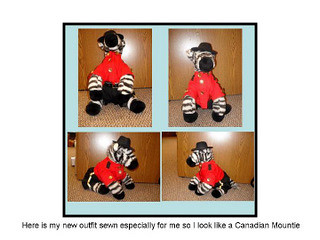
Secondly, you need to create a timeline. It’s imperative to consider these questions:
- How long are you going to conduct the travel buddy exchange? Remember that the traditional exchange requires each student to take the buddy home one night, so you’ll need to do the exchange at least a few weeks for every student to participate.
- When should the buddies arrive and leave? Consider postal travel time. If the buddy is being shipped from US to Australia, it is a minimum of 14 days. Europe is usually a week, North America less than a week, South Africa is 20 days. All of this is extended in the month of December, however. Your post office can give you more information. Of course, if you pick a partner classroom in your own country, postal travel is considerably shorter.
- What milestones or project expectations are to be met? Your buddy should have a curriculum focus for his visit. What is he to discover or research? We’ve sent first grade buddies to research community helpers on six continents. Fourth grade buddies visited American classrooms to research landforms, cultures, and local attractions. In any project, they buddy should be supporting your curriculum standards.
- How often will your communicate with your partner classroom? I believe classes should be sending updates on a weekly basis at the minimum, especially if you have primary students involved. We determined that Fridays would be buddy days where we would explore the project wiki or blog with students, so Thursdays were deadline days for teachers to post all current information.
Third, you will need to brainstorm what technology will be used. The obvious is digital photography, and it is critical. Photos bring the buddy’s adventures to life, and today sharing photos with tools such as Animoto, Voicethread, Flickr, Troovi, and PhotoPeach is easier than ever. Photos can also be customized with stickers and text using other web tools. Be sure to check out my post on digital photo editors for more help with his. We have also created photo slideshows to introduce our class to our partners through PhotoStory3. Flip Cameras would be easier to make quick video postcards.
I also recommend using a blog or wiki as the centerpiece to the project. Wikis are easier for tech newbie teachers, but blogs are easier to chronologically post reports from the buddy. The real question is what works better for your situation? If you want to have one site for both classes to post photos and diary entries, the wiki would be the best option. If you would rather have simple news reports, the blog is better.
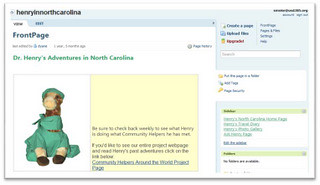
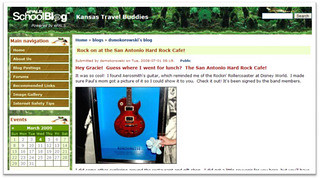
Consider doing at least one video camera web call through a district video conferencing system or through Skype if time zones are not in conflict. This opportunity makes a real impact when the partner classrooms can meet virtually and discuss some of the buddy adventures and experiences. I would definitely consider doing this the day the buddies are packing up to head home and then again the day when the buddies arrive back at their home base schools. It would be exciting for the students to view the partner classroom expressions when the buddy arrives with gifts.
How Do I Find a Partner Classroom?
Sometimes this easier said than done, but there are options. If you know of any other resources, I welcome them in the comments of this post.
- Global Schoolhouse – Thousands of teachers all over the world subscribe to Global Schoolhouse, so your call for partners would reach many inboxes in many languages. Before posting your project here, I strongly suggest you have laid all the ground work for the project goals, timeline, and such along with a link to your project wiki or blog. You will have better responses if you are organized and completely forward with your expectations.
- Teachers.Net Travel Buddy Message Boards – I have had fairly good experiences here finding partner classrooms. Simply post your student ages and how long you would like to conduct the exchange.
- OZ Travel Buddy Listserv – This listserv out of Australia is probably the best contact you can make to find a buddy classroom. You will need to subscribe to the listserv, be approved, and then post your request to conduct a buddy exchange. Teachers from all over the globe subscribe to the listserv, but your contacts are going to be primarily from English speaking countries.
- ePals Teacher Forum –Using ePals does have potential, but unfortunately, it does not have a specific travel buddy forum yet. The traffic that goes through ePals is a positive, however.
Professional Learning Networks are a sure fire way to find a partner classroom. Many social networks such as Classroom 2.0, Facebook, Plurk, Twitter, and Diigo have strong educational groups. Being a part of at least one of these not only helps you improve your teaching skills, allow you to expand your network with teachers all over the world.
How Do I Host a Buddy in My Classroom?
This is the best part of the project – having fun with the buddy!
Set Up Adventure Opportunities - Remember, he is an ambassador from another region who is investigating life in your community. He should be out exploring all the wonderful things your community and school have to offer – museums, ball games, school assemblies, guest speakers, favorite destinations, and more. The sky is the limit.
Here are some adventures your buddy could have. Be sure to collect souvenirs along the way such as ticket stubs, brochures, maps, etc, and for goodness sake, DON’T FORGET the camera!
- Students could take him on a walk around the neighborhood taking pictures at the post office, grocery store, businesses.
- Plan a class field trip and take the buddy with you.
- Invite a local celebrity to school to meet the buddy such as an elected official, local dance or martial arts instructor, or a reporter. (Buddies have been known to meet NFL players, actors, and state governors)
We have also seen buddies go skiing with a teacher for the weekend, take train rides across Eastern Europe, go panning for gold in California, tour Mardi Gras parade floats in New Orleans, visit Broadway, and spend a day at Disneyland.
Arrange for Home Visits – Part of the project involves each student taking the buddy home one night during his stay. I would recommend getting a small bag or backpack for him to travel back and forth to school. He will also need a journal for the students to record what the buddy did in the evening. What did he eat? What games did he play? Does the student have anything he’d like to tell the partner classroom about his community they would find interesting? We always leave part of the journal blank for the students to either post digital photos or drawings of what happened during the evening visit. The home visit journal is a wonderful tool, especially as it is passed from household to household since this allows parents to share in the travel buddy experience, as well.
I would recommend creating a calendar schedule assigning what student will take the buddy home each evening. This will save a great deal of grief later.
Keep in touch with your partner classroom – This is a critical component of the project. Email your partner classroom or post to the blog or wiki weekly reports from the buddy, and write it from the buddy’s point of view.
Host a going away party for the buddy – When it’s time to send the buddy home, have the students celebrate all the good times while packing him in his box. Consider sending gifts back to the partner classroom of handmade cards, art projects, or even a scrapbook.
What is Involved With Shipping a Buddy?
The number one rule is check with the post office ahead of the game. The US Postal Service is strict about the size and weight of a box you can ship overseas without paying heavy duty fees. In addition each country has certain restrictions of what can or cannot be imported. For example, Australia does not allow seeds of any sort. You will need to fill out a customs form, but your post office will help you with that. Of course, if you are shipping within the same country, the restrictions are far less.
These are some of the gifts that we usually send along with the buddy’s souvenirs: light weight candy that will not melt such as pixie sticks, handouts that reflect our community (state bird, flower, etc), picture postcards or posters for bulletin boards, student created bookmarks, and a couple of paperback books signed by the students as gifts to the partner classroom to expand their library.
How Will My Students be Impacted?
Your students will become emotionally attached to the buddy, and don’t be surprised if you do, as well. They will receive primary resources and artifacts from your partner school that simply couldn’t be gathered any other way. Students will be able to taste, touch, smell, and see things their text books and simple Internet research will never provide. Your students will also help lead the learning. They are experts in their own community and will be sharing that knowledge with peers somewhere else on the planet. I am telling you magic will happen, and your students will be in the center of it all.
With any luck, this post will spark enough interest that more travel buddy projects occur here in the United States and around the globe. Even with the economic struggles many schools are facing, these projects can be customized to be more cost effective such as emailing an image of a buddy for the partner classroom to download and print. I wouldn’t scale this back too far, however. It’s important for your students to have that buddy to hold onto, to take on a field trip, and to love just as it is important for the intercultural boxes to be exchanged. There is nothing like the feeling of opening the box when the buddy returns bearing gifts for your students. It’s true magic, plain and simple.
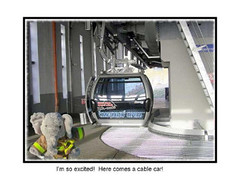
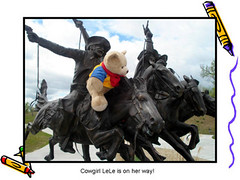
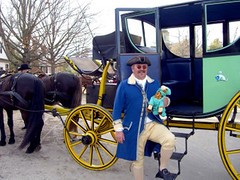
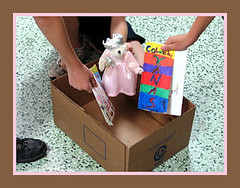
No comments:
Post a Comment